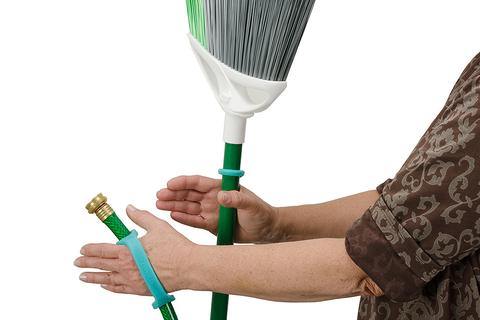
According to AARP, the majority, or 90 percent of seniors would prefer to live out their days at home as they age. In order for seniors to achieve that goal, it is important to plan ahead. These tips and suggestions will help you or your loved one live safely, comfortably and independently at home.
Explore Community Resources
Community resources and features are very important when it comes to aging in place. These services can have a huge impact on a person’s quality of life. Does your community offer transportation, nutrition services and home modification programs for seniors? As a person ages, the need for these types of services increases. Knowing what types of services are available can make it easier to plan whether or not aging in place is a realistic option for your or your loved one.
Utilize Technology
New technology is coming out all of the time that can allow you or your loved one to remain at home. These high-tech devices give older people the opportunity to be more independent and self-sufficient. Here are just some of the technology available for aging in place.
Home Monitoring Systems
There are some emergency alert systems that allows family members to track their loved one’s activity pattern to determine if there are unusual changes. For instance, they can be notified if their loved one is not moving around the house or has not gotten out of bed for a while. These types of patterns can indicate that their loved one has fallen or is sick. Loved ones can be alerted if their loved one has wandered from their home or receive notifications if a loved one has not taken their medication.
Make Your Home Accessible
An accessible home is a must for aging in place. If you or your loved one’s home is not accessible, it will need modifications to ensure safety and comfort. Here are some important things to take into consideration when it comes to home accessibility.
Is Single-Floor Living Possible?
Does you or your loved one’s home have a kitchen, bathroom and bedroom on the first floor. This is a must for aging in place. Although it is possible to install an elevator or lift, keep in mind that it can be very expensive and takes up a lot of space. It can cost as much as $65,000 for installation plus plus there will be ongoing maintenance cost.
Open Floor Plans and Extra Wide Doors
Open floor plans are best when it comes to aging in place as this type of setup allows for easy maneuverability, especially if you or your loved one is in a wheelchair. The same thing goes for extra-wide doors.
Accessible Baths
In most cases, bathrooms will need to be modified to add a roll-in shower or bath. Grab bars, hand-held shower controls and non-slip surfaces are also very helpful.
Consider Assistive Devices
Assistive devices are tools that help people do things for themselves. Those who have trouble performing routine tasks, caring for themselves or getting around would benefit from assistive devices. Assistive technology can help seniors avoid going into a nursing home by allowing them to care for themselves and continue to live independently. Assistive devices are also very cost-effective compared to nursing care. In addition, they provide the senior with a sense of accomplishment and dignity. There are many different types of assistive devices, here are just a few:
- Walker for those that have difficulty walking on their own
- Hearing aid to magnify sound
- Magnifying glass for viewing small print
- Motorized wheelchairs and scooters
- Cuffs that help those with arthritis grab objects
- Braille writing tools for the blind
- Shower chair to help with bathing
Aging in place can be a great alternative to expensive and sometimes impersonal nursing care. Planning ahead helps to ensure that you or your loved one is able to live comfortably at home for years to come.
EazyHold offers a collection of comfortable silicone hand straps to assist those challenged by weakened hand grip, arthritis and other disabilities. Visit our blog to learn more, or connect with us on Facebook, Instagram, Pinterest, and Twitter to stay in touch.
© EazyHold

